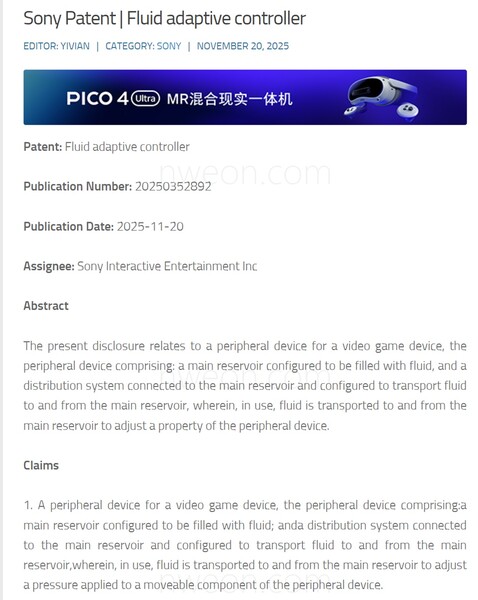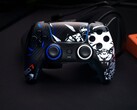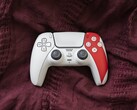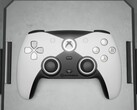Haptic feedback is one of the more innovative features of the DualSense PS5 controller. Still, Sony is always looking for ways to improve its peripherals. A new patent explains how hydraulic pressure could make interacting with buttons a more sensory experience. Future controllers may contain liquid-filled chambers that respond proportionately to force applied.
The documents spotted at the ResetEra forums have a publication date of November 20th. Accessories that could showcase the Fluid Adaptive technology may resemble the DualSense or the VR2 Sense controller. Each device would have a central reservoir of fluid, with the option to flow to secondary chambers. The smaller compartments are directly adjacent to the analog sticks or face buttons.
When pressing on inputs,“adjustment of a moveable component of the peripheral device can adjust the resistance to movement of the buttons, sticks, or triggers, or the extent to which a force feedback reservoir is expanded or contracted”. In one example, when characters traverse wet terrain, the resistance would feel more authentic than possible with haptic motors.
Fluid-filled controllers may not be practical
The Sony patent also proposes heating or cooling the liquid for even more realistic feedback. Already, critics are poking fun at the idea, with concerns about leaking accessories. It may be many years or never before Sony implements the radical concept. Even so, the filing argues that the idea would have other advantages. The description notes that “magnetic or mechanical systems” add weight to controllers.
Gamers may believe that revamping the DualSense haptic feedback or adaptive triggers shouldn’t be a priority. One common complaint with the default PS5 controller is its short battery life. A recent rumor hinted that a revised model would feature an easily replaceable battery. Unfortunately, the new peripheral hasn’t yet shown up at retailers.
The other frequently reported issue with the stock PlayStation accessory is analog stick drift. So far, Sony has resisted adopting Hall-effect or TMR technology, even on its pricey DualSense Edge. Any redesign that relies less on mechanical parts could improve the situation. That said, a hydraulic pressure system may not make the devices any easier to repair.


































